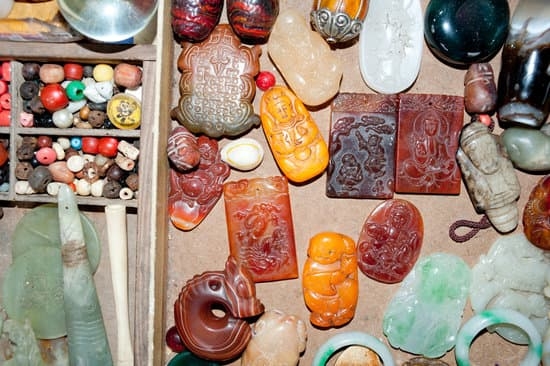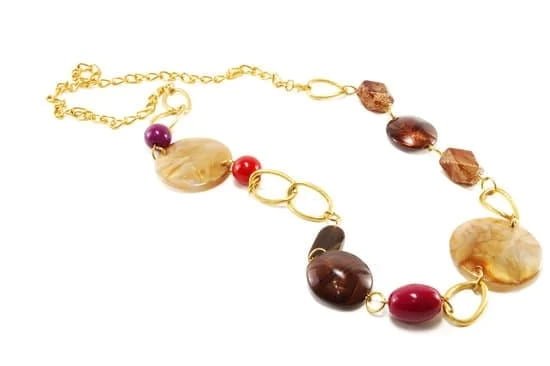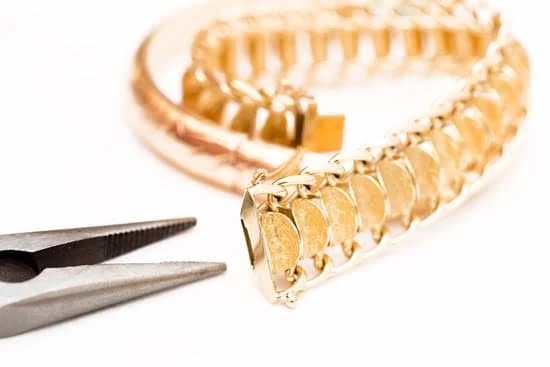Welcome to our blog post on how to keep your gold plated jewelry looking pristine and free from tarnishing. If you’re tired of seeing your favorite pieces lose their shine and luster, we’ve got you covered. In this comprehensive guide, we will share expert tips and tricks that will help you maintain the brilliance and longevity of your gold plated jewelry collection.
Gold plated jewelry is a popular choice for its affordability and beauty, but it can be prone to tarnishing over time. Understanding the basics of gold plated jewelry is crucial in order to properly care for it.
We’ll explain what gold plated jewelry is, how it is made, and why it tends to tarnish more easily compared to solid gold. Additionally, we’ll delve into the different types of gold plating and their durability, so you can make informed decisions about your purchases.
Proper storage techniques play a key role in preventing tarnishing. You might be surprised at how much difference storing your gold plated jewelry correctly can make. We’ll cover various storage options such as jewelry boxes, anti-tarnish pouches, or hanging stands, and provide recommendations on best practices. By implementing these storage methods, you can significantly prolong the lifespan of your cherished pieces.
In the upcoming sections, we’ll also discuss avoiding exposure to harsh chemicals that can accelerate tarnishing, effective cleaning methods for restoring sparkle without damaging delicate plating, protective measures against moisture and sunlight, as well as exploring alternative options that offer similar aesthetics with improved durability. So stay tuned for all the valuable information coming up.
Understanding Gold Plated Jewelry
Gold plated jewelry is a popular choice for those looking for affordable and stylish accessories. Understanding the basics of gold plated jewelry can help you care for it properly and prevent tarnishing.
Gold plated jewelry is made by covering a base metal, such as copper or brass, with a thin layer of gold through a process called electroplating. This layer of gold can vary in thickness, typically ranging from 0.5 to 2.5 microns. The thickness of the gold plating determines the longevity of the jewelry before it starts to tarnish.
It’s important to note that gold plated jewelry is not the same as solid gold. Solid gold is made entirely of gold, while gold plated jewelry consists mainly of a base metal covered with a thin layer of gold. This difference in composition plays a role in why gold plated jewelry may tarnish more easily compared to solid gold.
Gold plating can wear off over time due to factors like friction, exposure to sweat, and contact with chemicals. When this happens, the base metal underneath becomes exposed and may start to oxidize, resulting in tarnishing and losing its shine.
There are different types of gold plating available on the market, including flash plating and thick plating. Flash plating involves quickly dipping the base metal into an electroplating solution and produces a thin layer of gold that may wear off more quickly. On the other hand, thick plating involves longer immersion in the electroplating solution, resulting in a thicker layer that offers better durability.
Understanding these basics will help you choose high-quality gold plated jewelry that will last longer before requiring maintenance or replating. Consider these factors when purchasing new pieces or evaluating your existing collection:
- The thickness of the gold plating: Generally, thicker layers provide better durability.
- The type of base metal used: Some metals are more prone to oxidation than others.
- The manufacturer’s reputation: Research brands known for high-quality gold plated jewelry.
By being aware of these factors, you can make informed decisions when purchasing and caring for your gold plated jewelry, prolonging its lifespan and keeping it looking beautiful.
Proper Storage Techniques
One of the key factors in preventing tarnishing of gold plated jewelry is proper storage. Storing your jewelry correctly can help minimize exposure to air, moisture, and other elements that can lead to discoloration and loss of shine. Here are some essential tips for proper storage techniques:
- Jewelry Boxes: A jewelry box with separate compartments is an excellent storage option for gold plated jewelry. The individual compartments prevent pieces from rubbing against each other, which can cause scratches or wear down the plating. Look for a box with a soft lining to protect your jewelry from any potential damage.
- Anti-Tarnish Pouches: Anti-tarnish pouches are specially designed to prevent oxidation and tarnishing of metal surfaces, including gold plating. These pouches typically contain compounds that absorb moisture and remove sulfur-containing gases from the air, helping to inhibit tarnish formation. Simply place your gold plated pieces inside these pouches before storing them in a cool and dry place.
- Hanging Stands: If you have larger or statement gold plated jewelry pieces like necklaces or bracelets, consider using a hanging stand for storage instead of keeping them coiled up in a drawer or box. This prevents tangling and allows the items to be displayed elegantly while reducing the risk of scratches or damage.
Best Practices:
- Before storing your gold plated jewelry, make sure it is completely clean and dry as any residue can contribute to tarnishing over time.
- Avoid storing your gold plated pieces in areas prone to extreme temperature changes, such as near heating vents or windowsills.
- Keep your stored jewelry away from direct sunlight as prolonged exposure can cause fading or discoloration.
- Consider using silica gel packets or moisture-absorbing products alongside your stored gold plated jewelry to help maintain a dry environment.
By following these proper storage techniques and best practices, you can greatly reduce the chances of tarnishing and keep your gold plated jewelry looking bright and beautiful for years to come. Remember that proper storage is just one aspect of maintaining your jewelry’s condition – regular cleaning and maintenance are equally important.
Avoiding Exposure to Harsh Chemicals
One of the most important aspects of preventing tarnishing in gold plated jewelry is to avoid exposure to harsh chemicals. Certain chemicals and substances found in common household products can accelerate the tarnishing process and dull the shine of your jewelry. By taking proactive measures to protect your pieces, you can maintain their beauty and luster for a longer period of time.
Here are some common household chemicals and substances that you should be cautious about when wearing gold plated jewelry:
- Perfumes and Lotions: Many perfumes, lotions, and other personal care products contain chemicals that can react with the metal plating on your jewelry. These reactions can cause discoloration or even lead to peeling of the gold layer. To prevent this, it is advisable to apply perfumes or lotions before putting on your jewelry. Allow sufficient time for these products to dry before wearing your gold plated pieces.
- Cleaning Agents: Certain cleaning agents, such as bleach, ammonia, or chlorine-based solutions, can damage the delicate gold plating on your jewelry. Avoid wearing your gold plated pieces while using these harsh cleaning agents around the house. It’s also essential to remove your jewelry before swimming in chlorinated pools or hot tubs.
To protect your gold plated jewelry from harmful chemicals, here are some preventive measures you can take:
- Put on your jewelry after applying perfumes or lotions.
- Remove any rings or bracelets before handling cleaning agents.
- Store your gold plated pieces separately from cleaning supplies to avoid accidental contact.
- Always remove your jewelry before swimming in pools or exposing it to chlorinated water.
By being mindful of these simple precautions, you can significantly prolong the lifespan of your gold plated jewelry and keep it looking pristine for years to come.
Cleaning and Maintenance
Cleaning and maintaining your gold plated jewelry is essential to keep it looking its best. Over time, dirt, oils, and other residues can accumulate on the surface of your jewelry, dulling its shine. However, with the right cleaning methods, you can easily restore the sparkle of your gold plated pieces.
One effective way to clean gold plated jewelry is by using a mild detergent. Start by mixing a few drops of gentle dish soap or baby shampoo with warm water in a small bowl. Place your jewelry in the soapy mixture and let it soak for a few minutes.
Then, use a soft toothbrush or a cotton swab to gently scrub away any dirt or grime from the surface. Be sure to reach all the nooks and crannies of your jewelry to remove any buildup effectively. Rinse your pieces thoroughly under running water to remove any remaining soap residue and pat them dry with a soft cloth.
Another option for cleaning gold plated jewelry is by using a gentle polishing cloth specifically designed for delicate items. These cloths are typically made with microfiber or similar materials that can effectively buff away tarnish and restore shine without causing damage to the plating. Simply rub the cloth gently over the surface of your jewelry until it regains its luster.
For those who prefer DIY cleaning solutions, there are several options available using household ingredients. One popular method is to create a paste using baking soda and water. Mix equal parts baking soda and water in a small bowl until it forms a smooth paste.
Apply the paste onto your gold plated jewelry using a soft cloth or brush, gently rubbing it onto the surface. Afterward, rinse off the paste under running water, making sure all traces are removed before drying.
It’s important to note that when cleaning gold plated jewelry, you should avoid using abrasive materials such as toothpaste or harsh chemicals that can scratch or corrode the plating. Additionally, never use ultrasonic cleaners as the vibrations can cause damage to the delicate layer of gold. Stick to gentle cleaning methods to ensure that your gold plated jewelry remains in pristine condition for years to come.
Protective Measures
Avoiding Water and Excessive Moisture
Water and excessive moisture are two of the biggest enemies when it comes to preserving the beauty of gold plated jewelry. When exposed to water, the thin layer of gold on the surface can erode over time, leading to tarnishing and discoloration. Therefore, it is essential to keep your gold plated jewelry away from water as much as possible.
One simple way to protect your jewelry is to remove it before activities that involve water, such as swimming, showering, or doing dishes. Even activities like sweating during a workout can cause moisture buildup if you’re wearing your jewelry. Be mindful of these situations and take off your gold plated pieces before engaging in any water-related activities.
If your gold plated jewelry does come into contact with water or gets moist, make sure to dry it thoroughly before storing it. Use a soft cloth or towel to gently pat dry the jewelry and remove any excess moisture. This will help prevent any potential damage caused by prolonged exposure to moisture.
Avoiding Prolonged Exposure to Sunlight
While sunlight might not directly cause tarnishing, prolonged exposure can lead to fading or discoloration of the plating on gold plated jewelry. The UV rays present in sunlight can gradually deteriorate the protective coatings on the jewelry’s surface, making it appear dull and less vibrant over time.
To protect your gold plated pieces from sunlight, consider storing them in a cool and dark place when they’re not being worn. This could be in a clean drawer or a dedicated jewelry box that shields them from direct sunlight. Alternatively, you can also use anti-tarnish pouches or wraps that are designed to block out UV rays.
When wearing your gold plated jewelry outdoors during sunny days, try to minimize direct sun exposure by pairing them with clothes that provide some shade for the pieces. Additionally, avoid leaving your jewelry on a windowsill or any other areas where it may be exposed to sunlight for extended periods.
By taking these protective measures and being mindful of water and sunlight exposure, you can greatly extend the lifespan and beauty of your gold plated jewelry. These simple steps go a long way in ensuring that your cherished pieces continue to shine for years to come.
Replating and Restoration
Replating and Restoration: Learn About the Possibility of Replating Worn-Out or Faded Gold Plated Jewelry to Extend Its Lifespan
Gold plated jewelry, despite its delicate nature, can be revitalized and restored through a process called replating. Replating involves applying a fresh layer of gold onto the jewelry surface to revive its luster and protect it from further tarnishing. This process is especially useful when the gold plating has worn off, revealing the base metal beneath.
The Process of Replating
Replating gold plated jewelry typically involves several steps. First, the old gold plating is carefully stripped away to ensure a smooth and even surface for the new layer of gold to adhere to. This step may require professional assistance as certain chemicals are needed to remove the old plating without causing damage.
After stripping off the old plating, the jewelry is thoroughly cleaned to eliminate any remaining residue or contaminants. It is essential to ensure that the surface is completely free from oils, dirt, or debris in order for the new layer of gold plating to bond effectively.
Once clean, the jewelry is then subjected to an electroplating process. A thin layer of gold is deposited onto the cleaned metal surface using an electrical current. This process ensures an even and uniform distribution of gold across all areas of the piece.
Finally, after electroplating, any necessary touch-ups or refinishing may be done to restore any lost details or intricate designs on the jewelry. This step requires careful attention and precision since excessive polishing may remove too much of the newly applied gold plating.
Professional Assistance for Replating
While some individuals may attempt replating at home using DIY kits available in stores, seeking professional assistance for this restoration process is highly recommended. Professional jewelers are equipped with the expertise and tools necessary to achieve optimal results without compromising or damaging the piece.
By entrusting your gold plated jewelry to a professional, you can have peace of mind knowing that they have the knowledge and experience to handle delicate materials and intricate designs. They will also be able to advise you on whether replating is the best option for your specific piece, as certain items may not be suitable for replating depending on factors such as the base metal or overall condition.
Replating provides an excellent opportunity to rejuvenate worn-out or faded gold plated jewelry and extend its lifespan. By restoring the protective layer of gold plating, you can enjoy your favorite pieces for years to come. Remember to consult with a professional jeweler who specializes in replating to ensure the best possible outcome.
Alternative Options
Gold plated jewelry can be a beautiful and affordable option for adding some sparkle to your collection. However, if you find yourself constantly dealing with tarnished pieces, it may be worth exploring alternative options that offer improved durability without compromising on aesthetics. Two alternatives to consider are gold-filled and vermeil jewelry.
Gold-filled jewelry is made by bonding a thick layer of gold to a base metal core, typically brass or sterling silver. Unlike gold plated jewelry, the layer of gold in gold-filled pieces is much thicker, making it more resistant to tarnishing and wear.
In fact, gold-filled jewelry can last for decades with proper care. The process of creating gold-filled jewelry also means that the gold layer is permanent and won’t fade or chip away over time.
Vermeil jewelry, on the other hand, consists of a base metal (usually sterling silver) plated with a thick layer of gold. To be considered vermeil, the gold plating must have a minimum thickness of 2.5 microns and be at least 10 karats in purity. This makes vermeil jewelry even more durable than traditional gold-plated pieces. With proper care, including regular cleaning and maintenance, vermeil jewelry can maintain its shine and brilliance for years to come.
When deciding between gold-filled and vermeil jewelry as alternatives to gold plated pieces, there are a few key differences to consider. First, while both options offer increased durability compared to traditional gold plating, the thickness of the gold layer varies. Gold-filled jewelry has a thicker layer of bonded gold compared to vermeil, which provides added protection against tarnishing and wear.
Another important factor to consider is cost. Gold-filled and vermeil jewelry tend to be more expensive than traditional gold plated pieces due to their higher quality craftsmanship and materials. However, considering their increased durability and longevity, they can ultimately be better value for money in the long run.
Frequently Asked Questions
When it comes to caring for gold plated jewelry, there are often many questions that arise. In this section, we will address some of the most commonly asked questions to provide clear answers and dispel any doubts or misconceptions you may have.
- Can I wear gold plated jewelry in the shower?
- Is gold plated jewelry hypoallergenic?
- How long does the gold plating on jewelry last?
- Can I clean my gold plated jewelry with regular cleaning products?
While it may be tempting to wear your gold plated jewelry in the shower for convenience, it is not recommended. The exposure to hot water, harsh soaps, and shampoo can accelerate the tarnishing process and potentially damage the delicate plating. It is best to remove your gold plated jewelry before showering or swimming to ensure its longevity.
Gold plated jewelry itself does not have hypoallergenic properties. However, the base metal used in the jewelry can play a role in determining if it is hypoallergenic or not. If you have sensitive skin or allergies, it is important to pay attention to the base metal used in gold-plated pieces. Some common hypoallergenic base metals include sterling silver and stainless steel.
The lifespan of gold plating can vary depending on several factors such as how frequently the piece is worn, how well it is cared for, and whether it comes into contact with substances that can cause tarnishing. On average, gold plating can last anywhere from 6 months to a few years with proper care and maintenance. However, it is important to note that eventually, the thin layer of gold plating will wear off over time and may require replating.
It is not advisable to use regular cleaning products such as abrasive cleaners or harsh chemicals on your gold plated jewelry as they can strip away the delicate plating. Instead, opt for gentle cleaning methods using mild dish soap and warm water or specialized jewelry cleaning solutions specifically formulated for gold plated pieces. Always follow the instructions provided and avoid using abrasive materials that can scratch the surface.
By addressing these frequently asked questions, we hope to provide clarity on some common concerns when it comes to caring for gold plated jewelry. Remember, proper care and maintenance are key to keeping your gold plated pieces looking pristine and free from tarnishing.
Conclusion
In conclusion, taking proper care and implementing regular maintenance routines are essential to prevent tarnishing of gold plated jewelry. Throughout this guide, we have covered various methods and techniques to help you maintain the brilliance and longevity of your gold plated pieces.
Firstly, it is important to understand the basics of gold plated jewelry and why it tends to tarnish more easily compared to solid gold. By gaining insights into different types of gold plating and their durability, you can make informed choices when selecting and wearing your jewelry.
Proper storage techniques play a crucial role in minimizing tarnishing. Whether using jewelry boxes, anti-tarnish pouches, or hanging stands, ensure that your gold plated jewelry is stored in a dry and protected environment. Avoid exposing your pieces to harsh chemicals such as perfumes, lotions, or cleaning agents that can accelerate tarnishing. Additionally, following effective cleaning methods will help restore the sparkle of your jewelry without damaging the delicate plating.
Ultimately, by implementing the tips shared in this guide and taking proactive measures to protect your gold plated jewelry from water, moisture, sunlight, and other potentially damaging factors, you can enjoy your dazzling pieces for a lifetime. Remember that replating and restoration are options for worn-out pieces but seeking professional assistance may be necessary. Finally, consider alternative options like gold-filled or vermeil jewelry for improved durability without compromising on aesthetics.
By following these recommendations and committing to regular maintenance and proper care practices, you can keep your gold plated jewelry looking pristine and lustrous for years to come. So go ahead, implement these tips with confidence and enjoy the timeless beauty of your cherished pieces.
Frequently Asked Questions
What can you put on gold-plated jewelry to keep it from tarnishing?
To keep gold-plated jewelry from tarnishing, it is important to take certain precautions. One effective method is to avoid exposing the jewelry to moisture or chemicals such as perfumes, lotions, or hairsprays. These substances can cause the gold plating to deteriorate and tarnish over time.
When not being worn, it is advisable to store gold-plated jewelry in a dry and protective environment, ideally in individual pouches or compartments. Additionally, one may consider applying a thin layer of clear nail polish onto the jewelry’s surface to act as a barrier between the metal and potential tarnishing agents.
How long can gold-plated jewelry last?
The lifespan of gold-plated jewelry can vary depending on several factors such as the quality of the initial plating, how well it is cared for, and how frequently it is worn. Generally speaking, gold-plated jewelry has a thinner layer of gold compared to solid gold pieces; therefore, it will eventually wear off or tarnish over time.
With proper care and maintenance, however, gold-plated jewelry can last anywhere from several months to a few years before showing signs of fading or tarnishing.
Can you clean tarnished gold-plated jewellery?
It is possible to clean tarnished gold-plated jewelry, although extra care must be taken during the cleaning process to avoid damaging the delicate gold plating. A gentle approach using mild dish soap and warm water can be effective for removing dirt or grime from the surface of the jewelry without causing harm. It is important not to scrub vigorously or use abrasive materials that could strip away the gold plating.
Instead, soaking the jewelry in soapy water for a few minutes and then gently wiping with a soft cloth should help restore its shine. If significant tarnishing occurs beyond what gentle cleaning can handle, it may be necessary to seek professional assistance from a jeweler who specializes in re-plating gold surfaces.

Welcome to my jewelry blog! My name is Sarah and I am the owner of this blog.
I love making jewelry and sharing my creations with others.
So whether you’re someone who loves wearing jewelry yourself or simply enjoys learning about it, be sure to check out my blog for insightful posts on everything related to this exciting topic!





